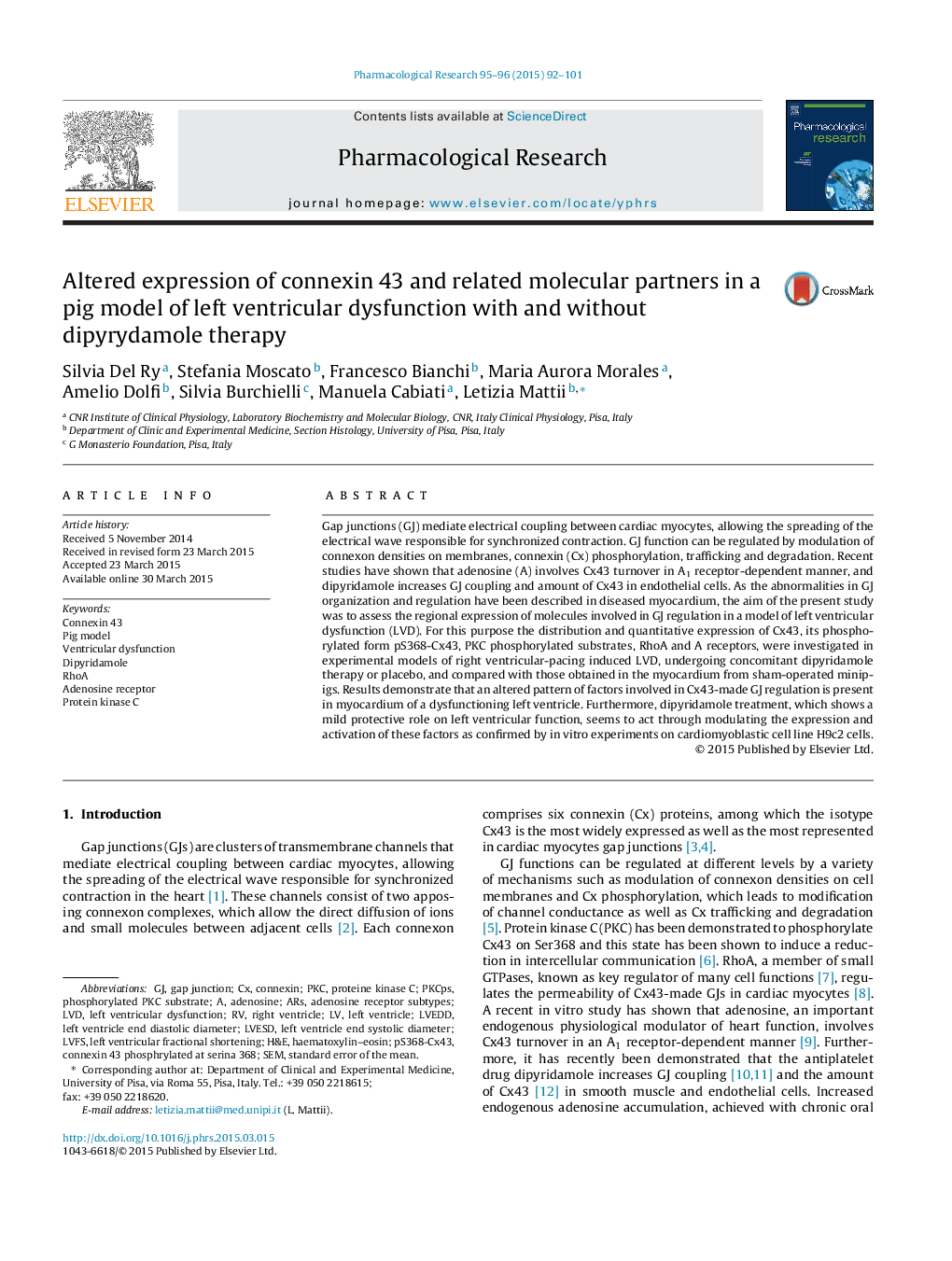| Article ID | Journal | Published Year | Pages | File Type |
|---|---|---|---|---|
| 2561924 | Pharmacological Research | 2015 | 10 Pages |
Gap junctions (GJ) mediate electrical coupling between cardiac myocytes, allowing the spreading of the electrical wave responsible for synchronized contraction. GJ function can be regulated by modulation of connexon densities on membranes, connexin (Cx) phosphorylation, trafficking and degradation. Recent studies have shown that adenosine (A) involves Cx43 turnover in A1 receptor-dependent manner, and dipyridamole increases GJ coupling and amount of Cx43 in endothelial cells. As the abnormalities in GJ organization and regulation have been described in diseased myocardium, the aim of the present study was to assess the regional expression of molecules involved in GJ regulation in a model of left ventricular dysfunction (LVD). For this purpose the distribution and quantitative expression of Cx43, its phosphorylated form pS368-Cx43, PKC phosphorylated substrates, RhoA and A receptors, were investigated in experimental models of right ventricular-pacing induced LVD, undergoing concomitant dipyridamole therapy or placebo, and compared with those obtained in the myocardium from sham-operated minipigs. Results demonstrate that an altered pattern of factors involved in Cx43-made GJ regulation is present in myocardium of a dysfunctioning left ventricle. Furthermore, dipyridamole treatment, which shows a mild protective role on left ventricular function, seems to act through modulating the expression and activation of these factors as confirmed by in vitro experiments on cardiomyoblastic cell line H9c2 cells.
Graphical abstractFigure optionsDownload full-size imageDownload high-quality image (162 K)Download as PowerPoint slide
